Where to get pizza, pasta and more Italian food from Jonathan Gold’s 101 Best Restaurants list
- Share via
Of the many terrific places to eat on Jonathan Gold’s 101 Best Restaurant’s list, where can you go for superlative minestra nel sacco, cavatelli alla Norcina, porchetta, truffled pasta e fagioli or, well, a good pizza ? Here are the 14 Italian restaurants on the 101:
MOZZAPLEX
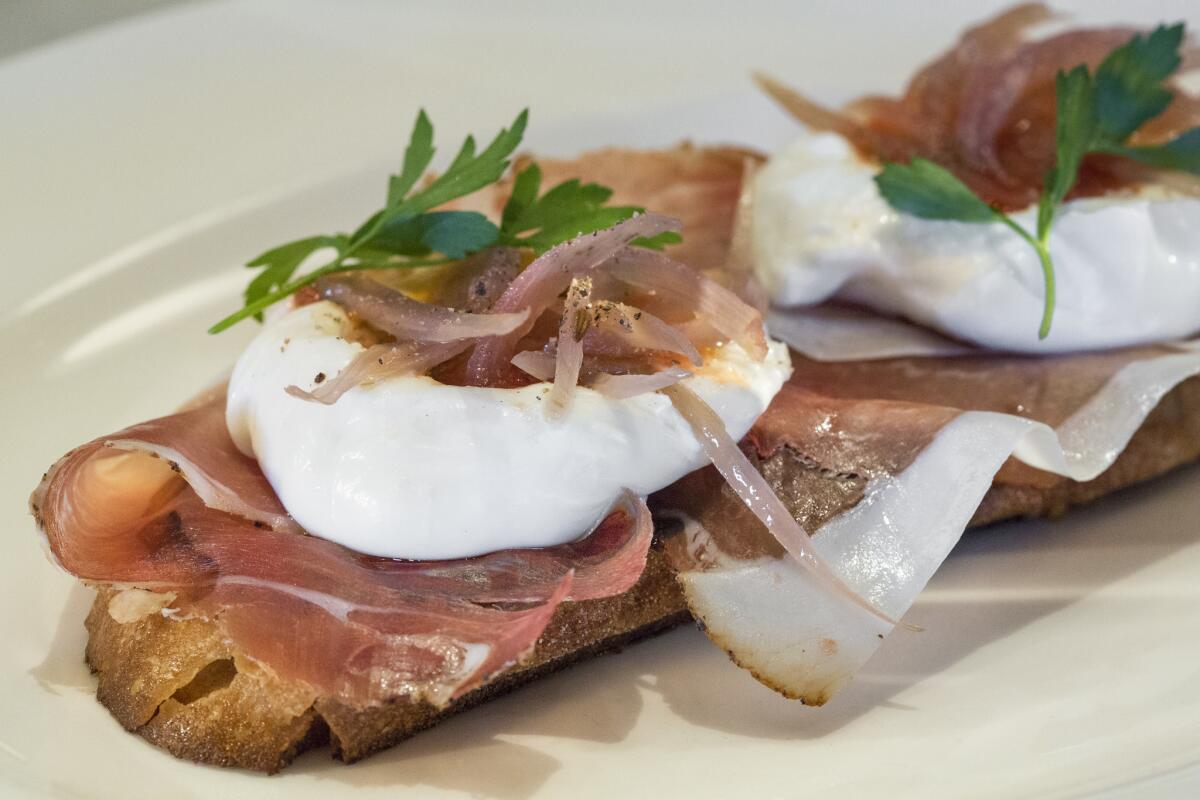
Pizzeria Mozza ranks among the best pizzerias in the United States — its crisp, risen, wood-fired pizzas are unlike any particular Italian style, but the crust is good enough to eat even without squash blossoms and burrata. The more formal Osteria Mozza goes from strength to strength, from the mostly Emilia-Romagna-style fresh pastas to rabbit with sausage, from the deep all-Italian wine list to Dahlia Navarez’s suave desserts. Mozza2Go is a takeout counter with a small specialty in Puglia-style focaccia. Chi Spacca is an Italian meat restaurant, famous for mammoth steaks and house-cured salumi, also the giant, Australian-style meat pie. Any of the four restaurants could well make this list on its own; together they form an unassailable rampart of urban rustic cuisine.
>>PHOTOS from the Jonathan Gold 101 Best Restaurants list party
ROSSOBLU
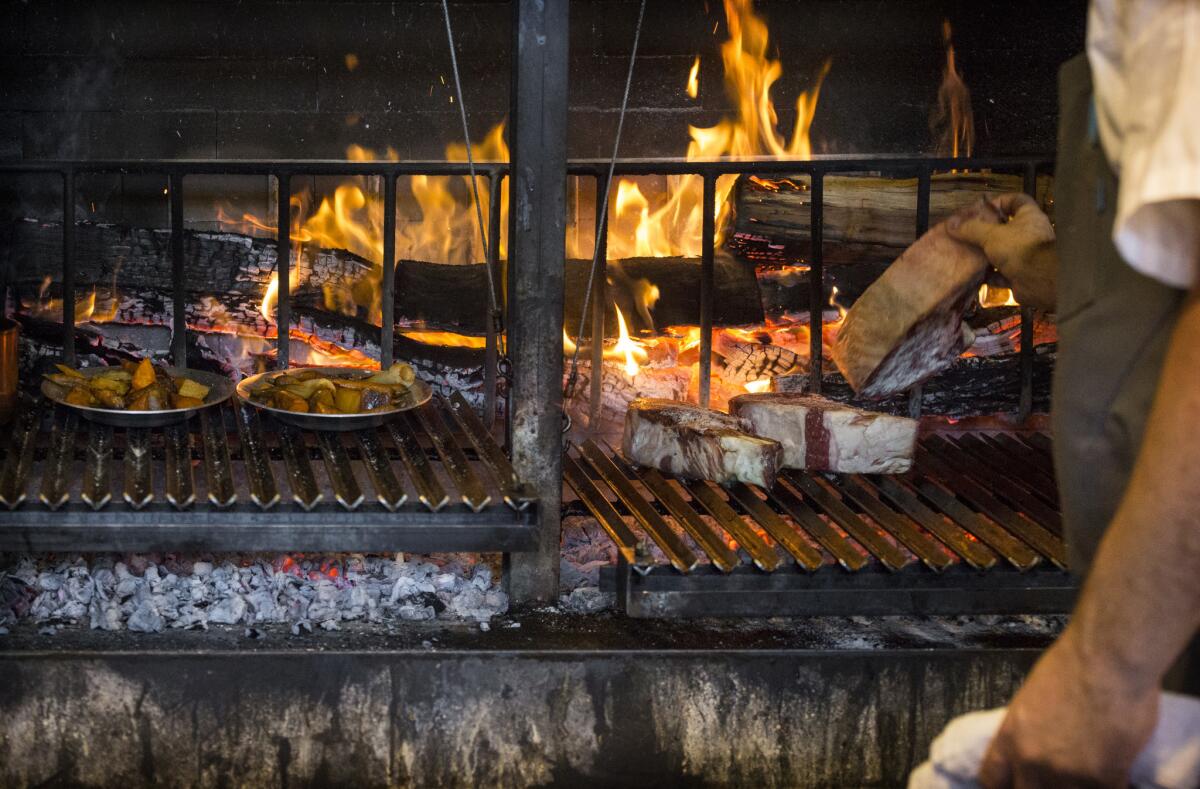
Have you tasted Rossoblu’s minestra nel sacco? It’s a homey dish, basically dumplings boiled in chicken soup. There is a reason tortellini in brodo is a better-known dish. Yet at Rossoblu downtown, the dish is positively exotic — Bolognese grandmother cooking introduced into a city with no Bolognese grandmothers. Would I be pushing things if I confessed that the minestra nel sacco reminded me a lot of the Xi’an bread-in-soup dish called paomo? In Los Angeles, things are complicated. Rossoblu, named for the uniform colors of the Bologna soccer team, is the new Bologna-focused restaurant from the chef Steve Samson, co-founder of Sotto. And it is possible to drop by, order a glass of Pignoletto and an overachieving salumi board, and be perfectly happy.
BESTIA
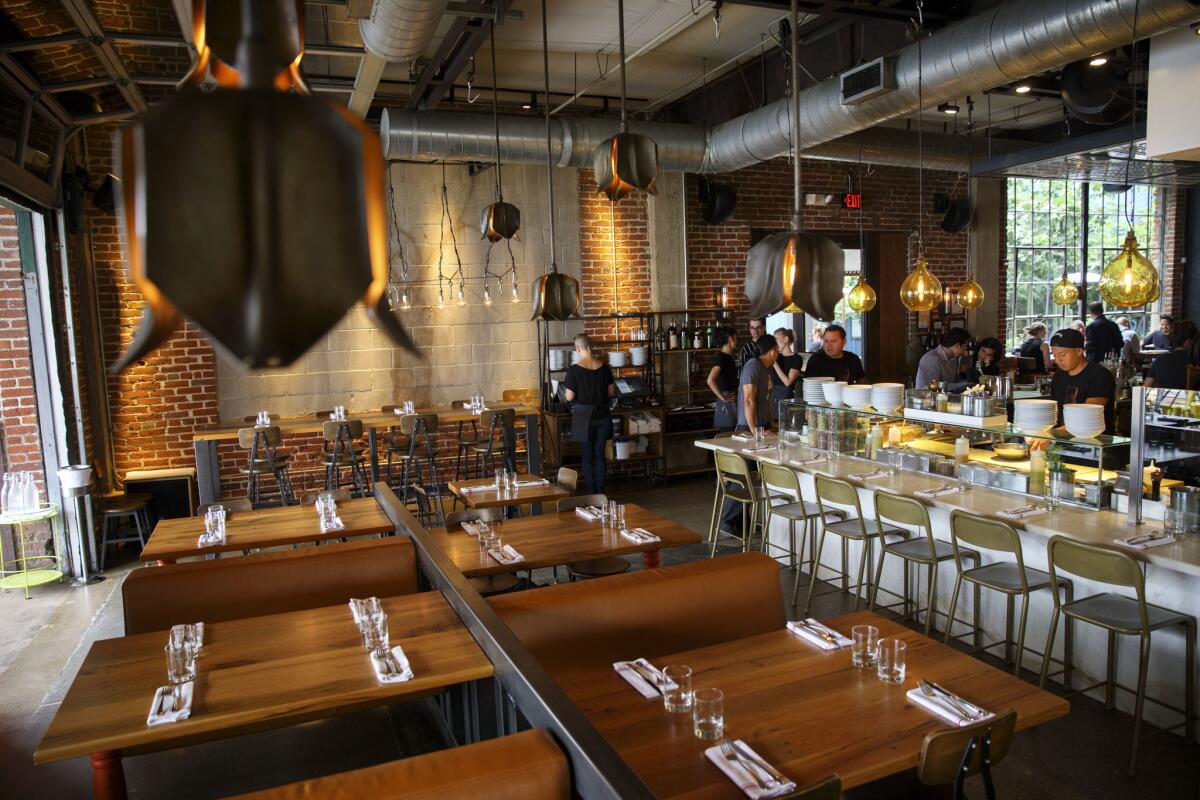
What Ori Menashe’s kitchen represents is a new kind of Italian cooking that creeps right up to the eastern Mediterranean, kissed with the aromas of spices, cured meats and woodsmoke, often lashed with char; with strong notes of acid and salt, uncooked greens and pungent cheese. The salamis and cured meats are aged in glassed-in cubicles behind the open kitchen — you’re going to want to order a charcuterie board. The pastas, which tend to be handmade, rustic and in the Los Angeles fashion cooked just short of al dente, may be tossed with a lamb ragù and sharp sheep cheese or with Dungeness crab and sharp chiles. and fresh ricotta or with sea urchin and chiles. The cavatelli alla Norcina with truffles and sausage may sound like something you’d find in Milan but tastes of wild Umbria, where truffles are as common as bread. And the pastries from Genevieve Gergis become more assured every year.
ALIMENTO
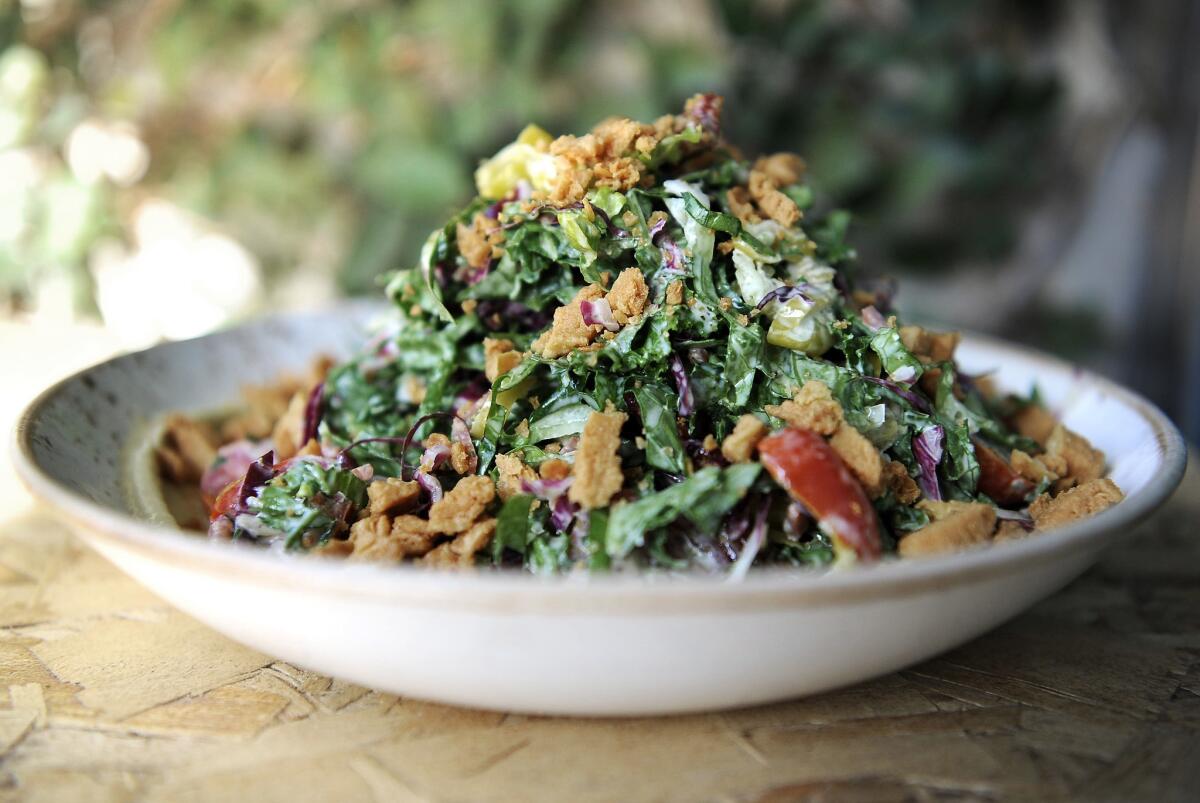
Tortellini in brodo is perhaps the emblematic dish of Bologna, Italy — tiny dumplings stuffed with a mixture that may include mortadella and Parmigiano-Reggiano served in a rich, concentrated broth. The ring-shaped dumplings are often said to be fashioned after the navel of Venus. Zach Pollack’s version turns the concept upside down, filling the tortellini with hot broth like a Shanghai soup dumpling and saucing it with what would otherwise be inside, and the effect is delightful. He constructs little finger sandwiches out of seared mortadella and puff pastry and calls it “pig in a blanket.” He boils veal tongue, slices it thinly and daubs it with puréed tuna — it is one of the loveliest versions of vitello tonnato you will ever taste.
VINCENTI
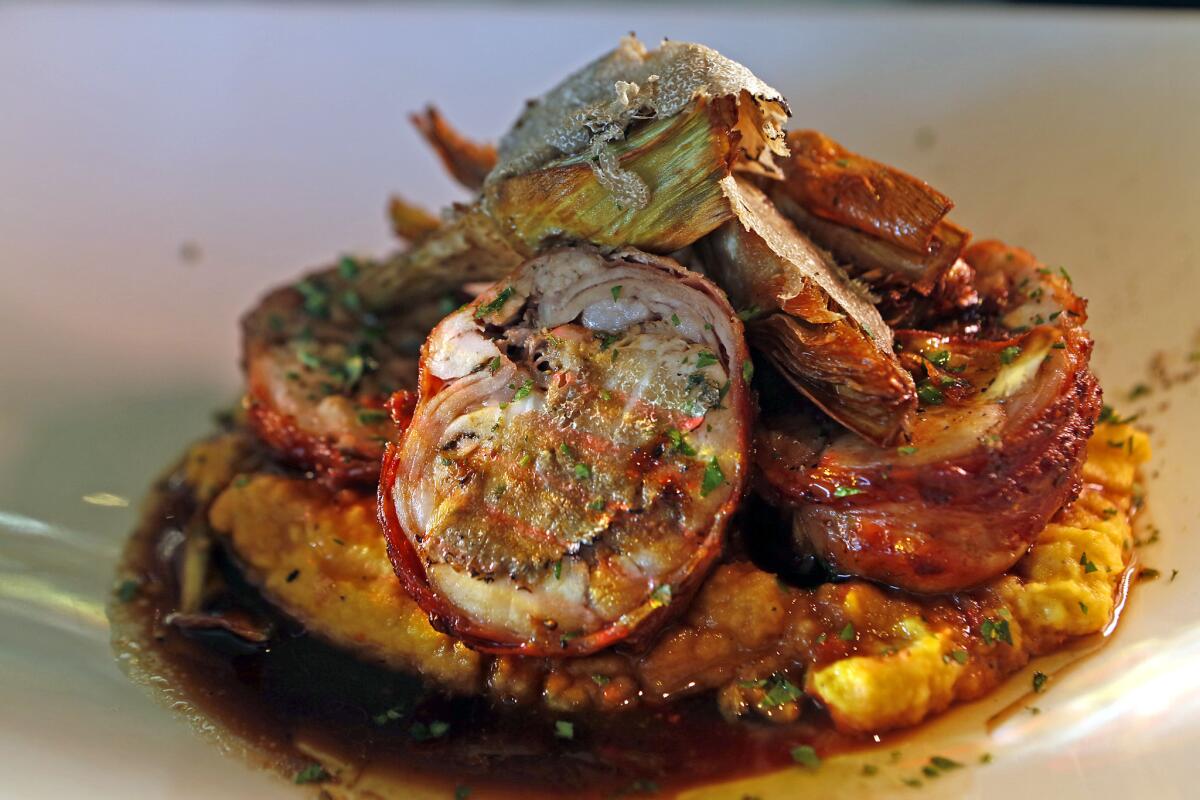
Vincenti, heir to the legendary Rex il Ristorante, may be the spiritual center of fine Italian cooking in Los Angeles, a spare, elegant dining room near the western end of Brentwood’s Italian dining district. Much of Nicola Mastronardi’s food — octopus with fava, rack of lamb, Dover sole with tarragon — comes from the big, hardwood-burning ovens, and the porchetta is still one of the better versions in town, dosed with fennel and spit-roasted until it is crisp and sizzling. His handmade pastas, including tagliolini with lemon and fusilli with a splendid, long-cooked sauce of tomato and lamb, tend to be both soulful and correct. Mastronardi’s polished, masculine style wasn’t formulated in reaction to classic Italian cooking — it is classic Italian cooking. On Monday nights, pizza comes out of the wood oven too.
PIZZANA
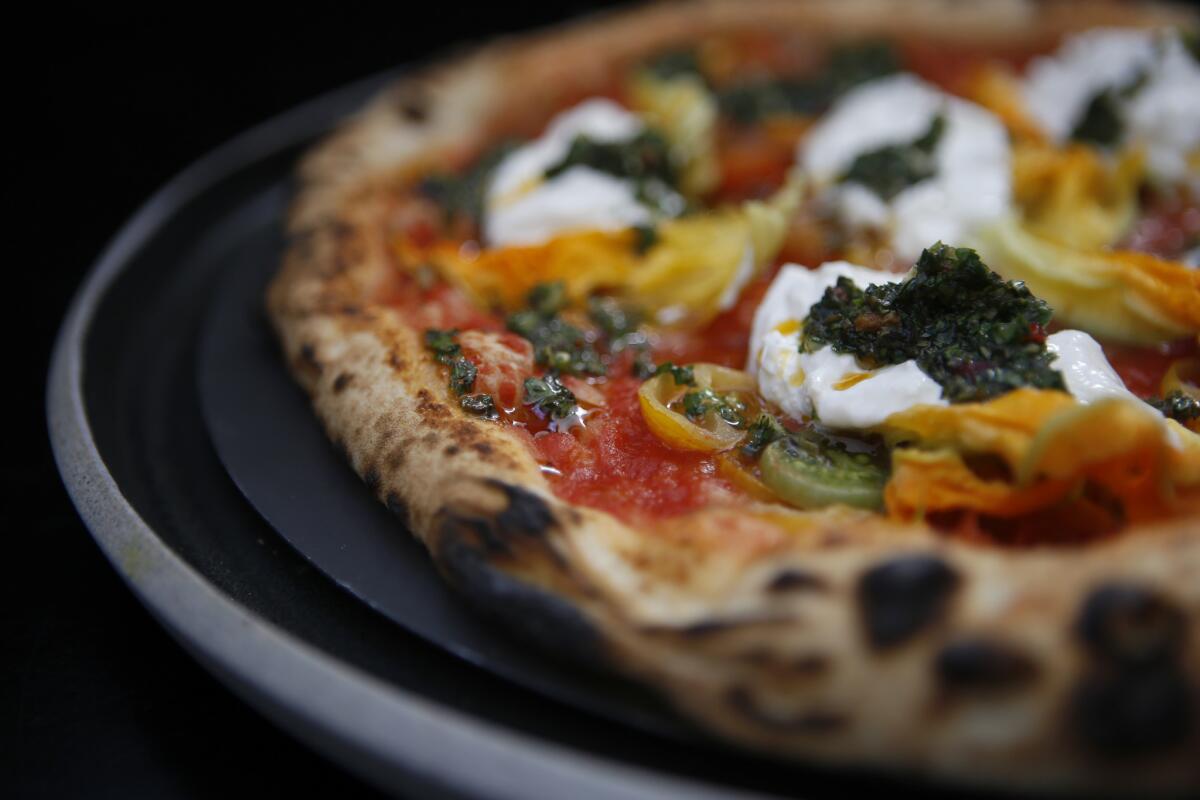
Can a pizza have a pedigree? Daniele Uditi earned his bones at his family’s bakery near Caserta, the buffalo mozzarella capital of Italy, as well as in one of the best pizzerias in Naples. Even before he had a restaurant, the pizzas he made for Hollywood parties marked him as a celebrity chef in Italian newspapers. So it is no surprise that people line up for hours outside Pizzana’s Brentwood dining room — there is nothing quite like his pizza in Los Angeles. Uditi favors a slow pass through his fiery wood oven and a crust edged with crispness. There are pizzas based on classic pasta preparations, including an awesomely garlicky pizza made to taste like Roman aglio e olio, and a pignatiello pizza topped with a grandmotherly Neapolitan ragù. His dough, made completely by hand in a traditional wooden bin, is allowed to ferment for nearly two entire days. Uditi is the real thing.
OFFICINE BRERA
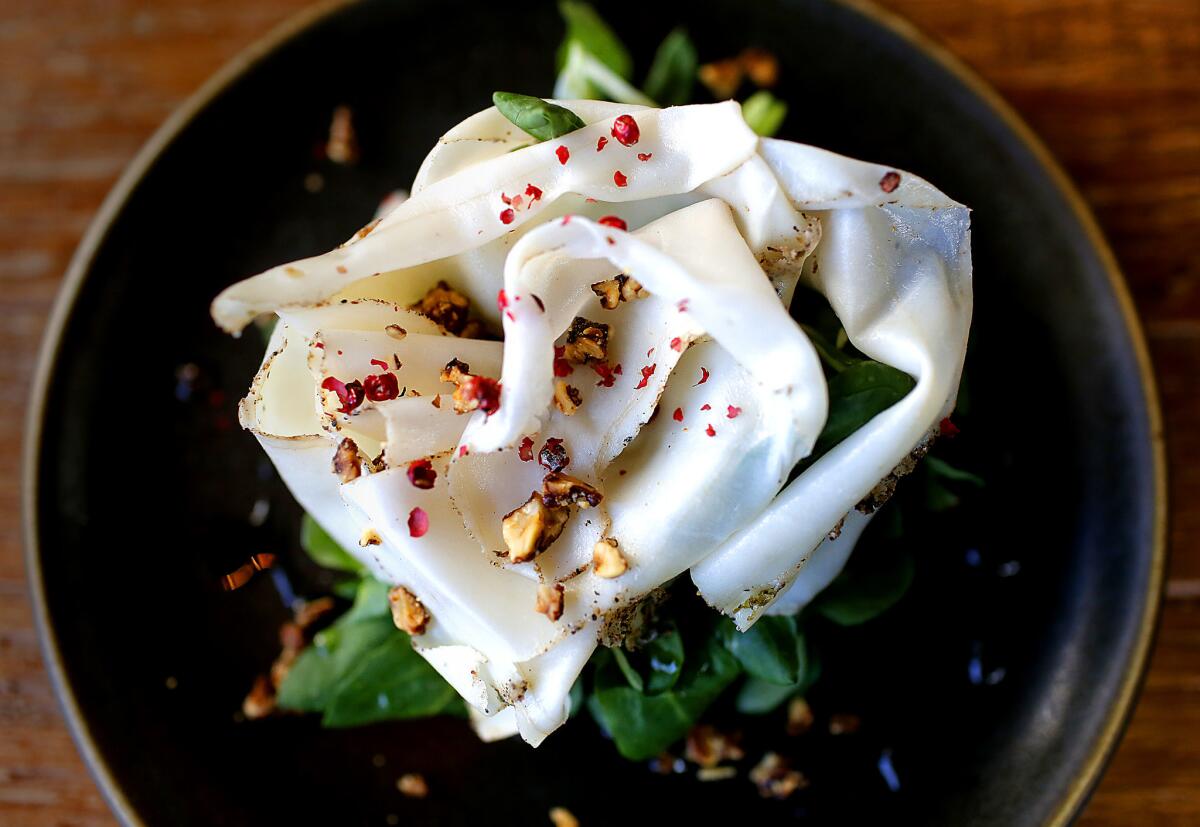
The chef is Angelo Auriana, the maestro of Factory Kitchen and veteran of many years at Valentino. The converted warehouse is glorious, with booming opera arias instead of EDM, and a menu that leans toward Flintstonian braised pork shanks, soft, winey slabs of braised beef shoulder and suckling pig with guanciale mashed potatoes. The pastas run to things like chestnut mafaldine in lamb sauce and cannelloni stuffed with braised beef, béchamel and chard. Even thinking about the truffled pasta e fagioli might be enough to make you wish for a brisk winter day. But what may be the best dish in the restaurant comes from seaside Genoa, and isn’t even on the menu — farinata: a warm slice of a chickpea flour crepe cooked in the wood oven and served from a wheeled cart barely big enough to hold the heavy copper pan. It is exactly what you want to be snacking on when the first Negronis arrive.
GJELINA
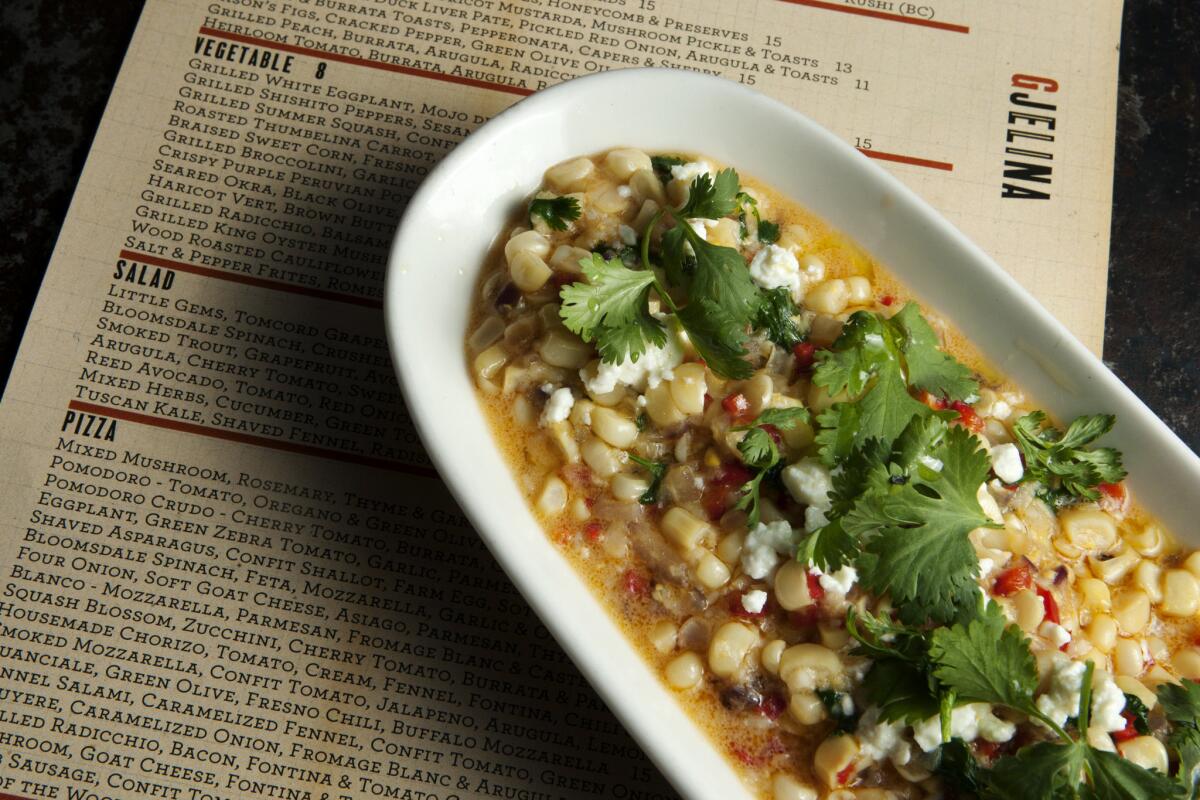
Gjelina has been open for almost a decade now. The turnover on Abbot Kinney has almost been complete. Travis Lett himself seems to be focusing his attention on the new izakaya MTN down the street. And yet Gjelina is still the restaurant everybody wants to go to — for its anchovy burrata toast, for its local squid with black-eyed peas and for its thin-crusted pizzas, but mostly for its vast selection of vegetable dishes, which channel the hyperseasonal shell beans and squashes and greens from the farmers market into vaguely Mediterranean compositions just big enough to be shared. It’s almost as if Lett understands us. If you want to hear what your friends are saying, try to get one of the tables in the patio.
THE TASTING KITCHEN
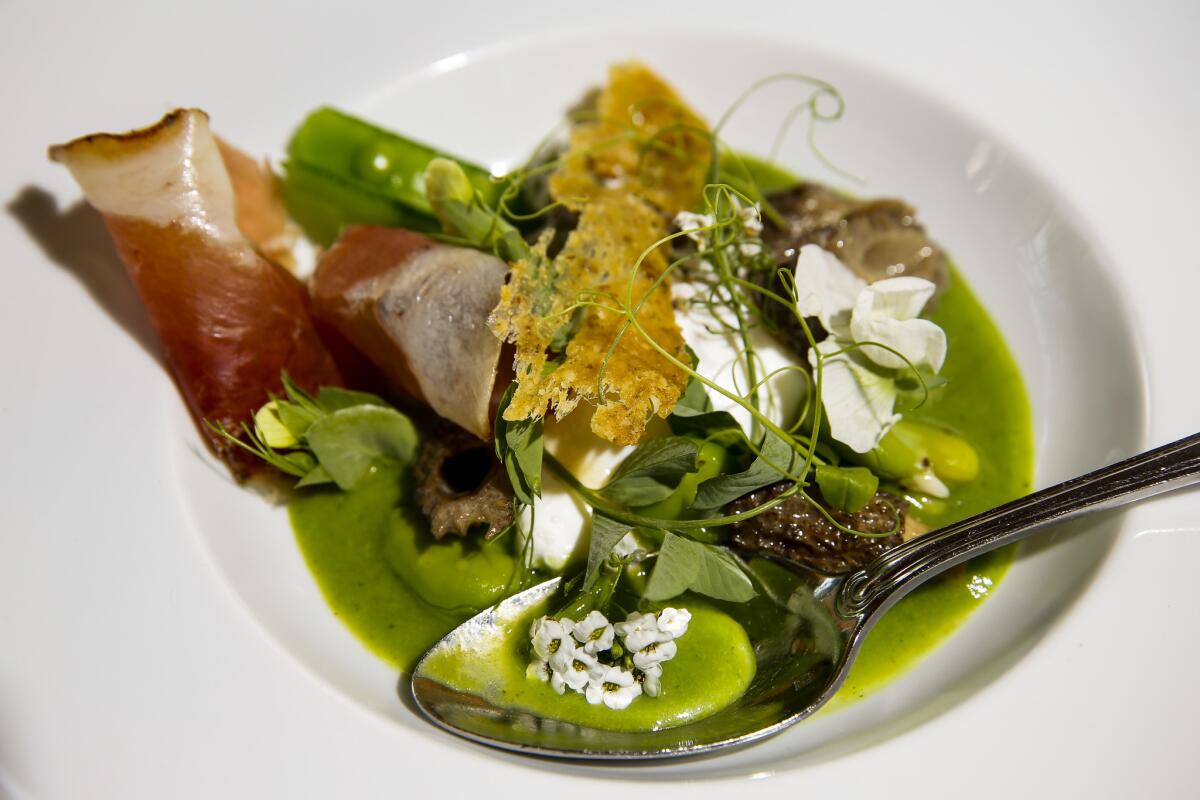
I may remark on this a little too often, but I continue to marvel that Tasting Kitchen actually exists. When it started, it felt like an act of performance art, Casey Lane and his friends coming down to occupy a failed Scandinavian restaurant like a hermit crab moving into a new shell. (Each evening’s menu is still numbered with the day of service, the way a prisoner might mark the day of his sentence — it’s nearing 3,000 by now.) The menu, laid out as roughly as a suicide note, is no longer all in Italian, although it may as well be. But time and influence have a way of leveling things out. And the idea of basing dinner around toasted bread, of stickying chicken with reduced cider or serving rabbit with fideo isn’t avant-garde — it’s dinner. May Lane remain on Abbot Kinney for another 3,000 days.
>>PHOTOS from the Jonathan Gold 101 Best Restaurants list party
SOTTO
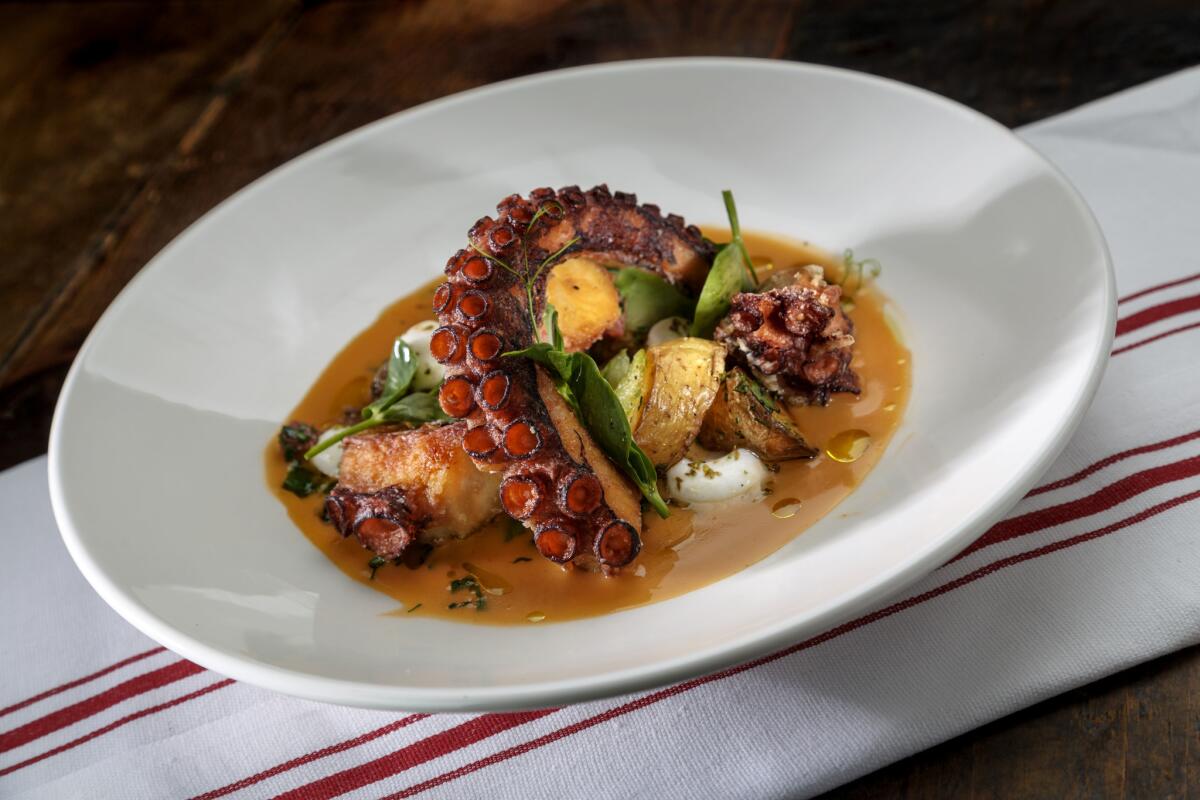
Sotto isn’t just a 15,000-pound wood oven and a Southern Italian-leaning menu. It is in retrospect a step forward in regional Italian cuisine. But you’re going to want that pizza, maybe the one with ricotta, house-cured pig cheek and at least a couple bucks’ worth of fennel pollen, and maybe the char-crisp octopus tentacle with mozzarella. The casarecce noodles, tossed with simmered lamb and sheep cheese, nods to the Middle East. And you should probably root around in the collection of amari, bitter Italian liqueurs, after a plate of cannoli. Even if you spenda lot of time in Italy, you’re going to run across something you’ve never seen.
ANGELINI OSTERIA
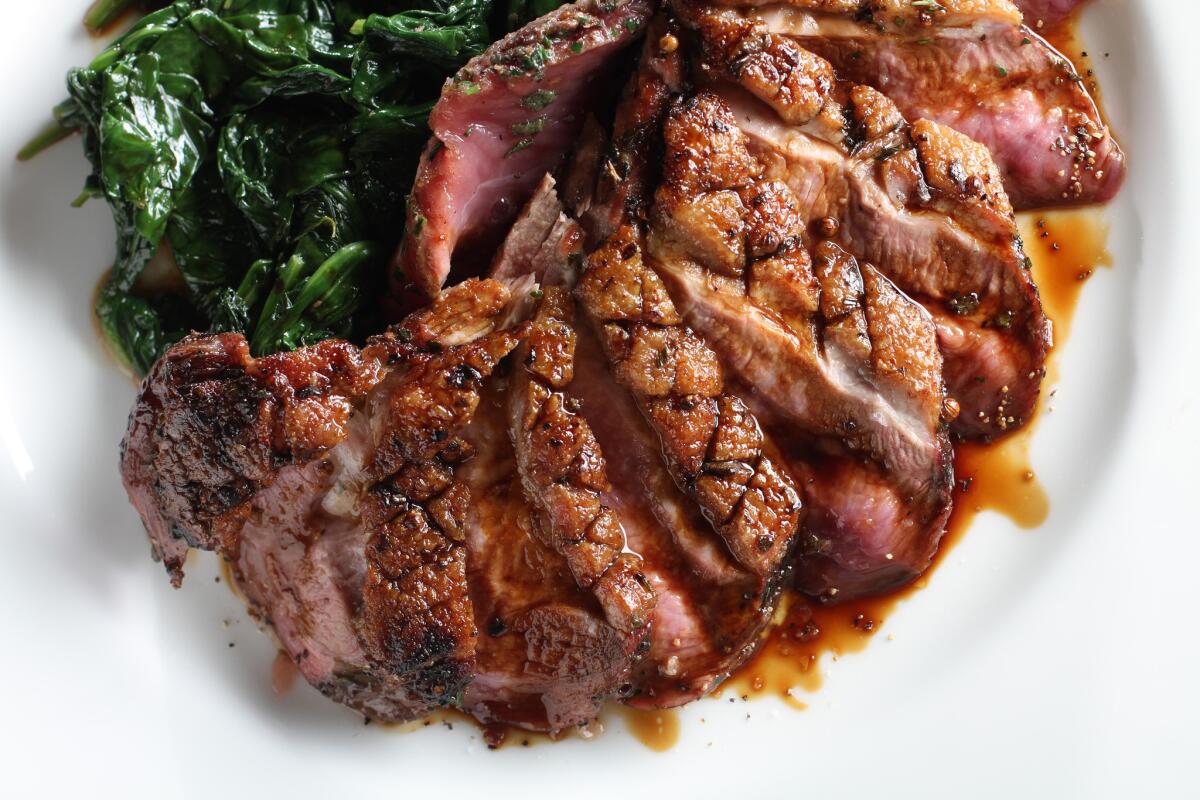
Angelini Osteria is almost everyone’s favorite Italian restaurant, a cozy dining room with well-designed trattoria cooking. Gino Angelini bounces from table to table when he isn’t supervising the hand-cut spaghetti with truffles or the grilled Santa Barbara prawns. Angelini has been cooking in Los Angeles for so long, and in so many restaurants more ambitious, that even if you have spent dozens of happy evenings in this cheerful dining room, it is easy to underestimate what a splendid cook he can be.
DRAGO CENTRO
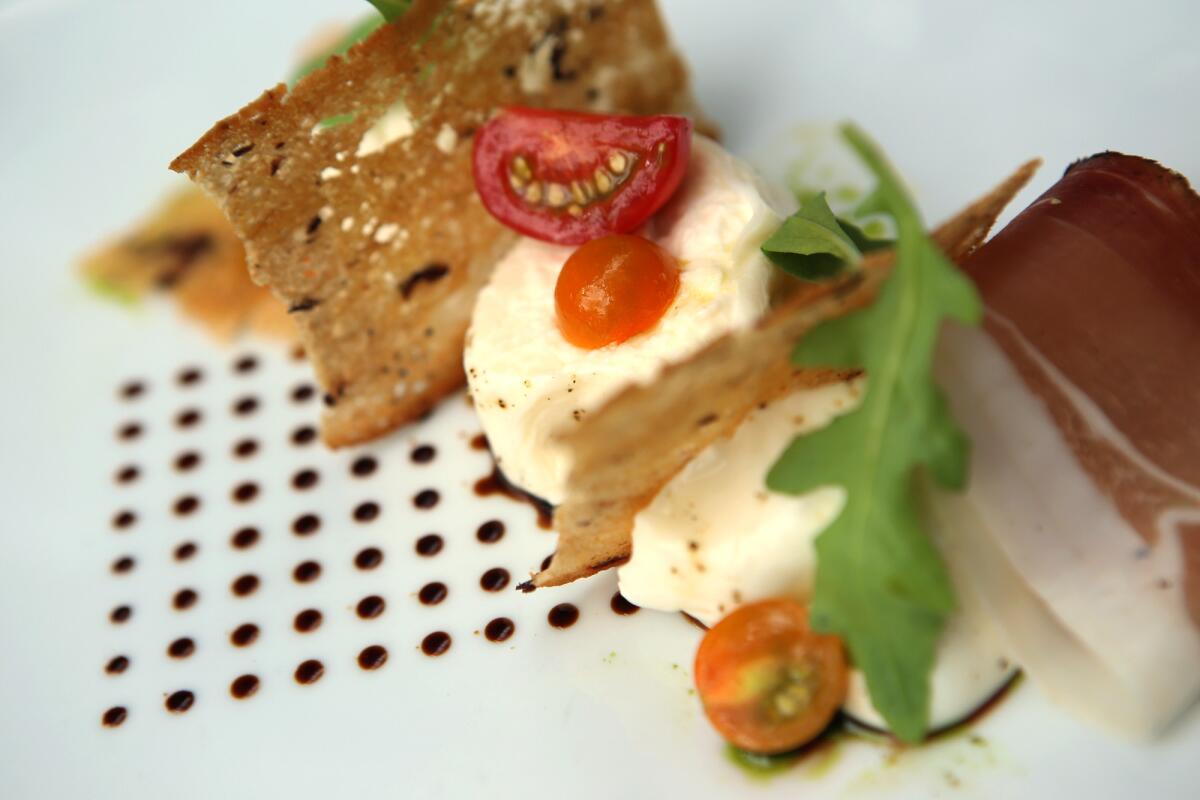
For local pasta lovers, it may be impossible to imagine a Los Angeles without Celestino Drago in it, and it is possible to write a certain culinary history of the city through his serial infatuations with straw and hay pasta, Tuscan restraint, risotto, elevated Sicilian cuisine, steak and wild game. He is a chef who may be at his happiest when he is knee-deep in dove, pheasant and hare. Drago Centro is still among the most commanding restaurants downtown, a grand dining room with a splendid view of the business district, a warren of private dining salons, and fine-tuned masculine cooking that stops two steps short of both regional specificity and the current micro-seasonal obsessions. Drago is probably best known for his pasta — shrimp ravioli, pappardelle with pheasant and mushrooms and handmade spaghetti with Sicilian almond pesto — but nobody has ever made a mistake at a Drago restaurant ordering meat.
VALENTINO
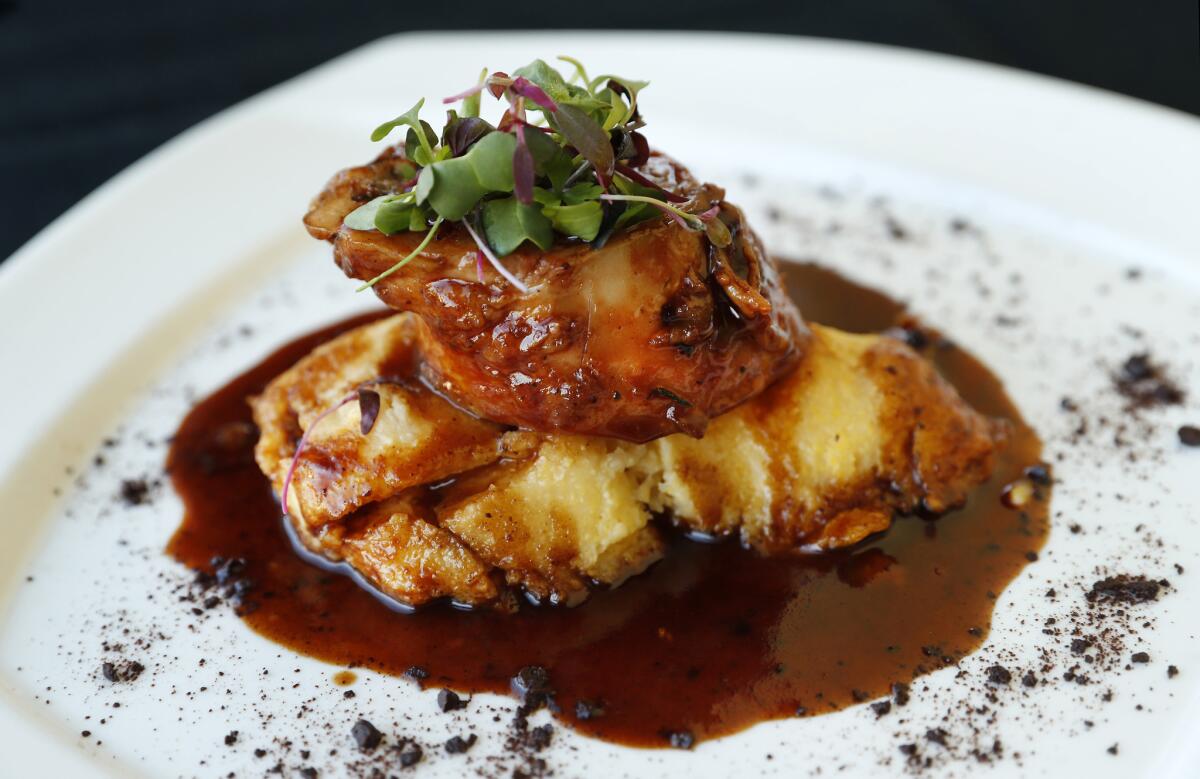
New, flashy Italian restaurants flash across the L.A. scene every year. Valentino is almost of a different world; dark and quiet, it is among the last of the great host-driven Italian restaurants, a place where some regulars have never seen a menu and the waiter’s job is to solidify abstract desire into fish and pasta and Vermentino. Valentino was the first in Los Angeles to serve white truffles, balsamic vinegar and radicchio, the first to fetishize great olive oil and the first to be as devoted to Italian wine as the French places were to Bordeaux — the list is extraordinary. If you are of an income and an inclination to command an ancient vintage of Barolo, you will find Valentino to be much as it ever was.
UNION

Bruce Kalman’s California trattoria Union is a rare market-oriented restaurant in a part of town dominated by chains, with the names of farmers scrawled on a wall next to maxims from people like M.F.K. Fisher and Alice Waters. It’s a place where the bread and butter plate comes on a wooden slab with a jar of pickles, the bread salad is made with stone fruit in season, the duck prosciutto and guanciale are cured in the back, and the polenta is ground a mile and a half away by Grist & Toll. Pastas are handmade, slightly stiff in the Los Angeles tradition: the spaghetti alla chitarra with spicy tomato sauce is always fine. If you show up early, you may have a shot at the fennel-intensive porchetta, which always sells out. If not, you can always console yourself with a slice of the olive oil cake.
ALSO:
The top 10 picks on Jonathan Gold’s 101 Best Restaurants in L.A. list
Jonathan Gold’s 101: Where to get sushi, ramen and more Japanese food
14 budget-friendly restaurants on Jonathan Gold’s 101 Best Restaurants list
More to Read
Eat your way across L.A.
Get our weekly Tasting Notes newsletter for reviews, news and more.
You may occasionally receive promotional content from the Los Angeles Times.










